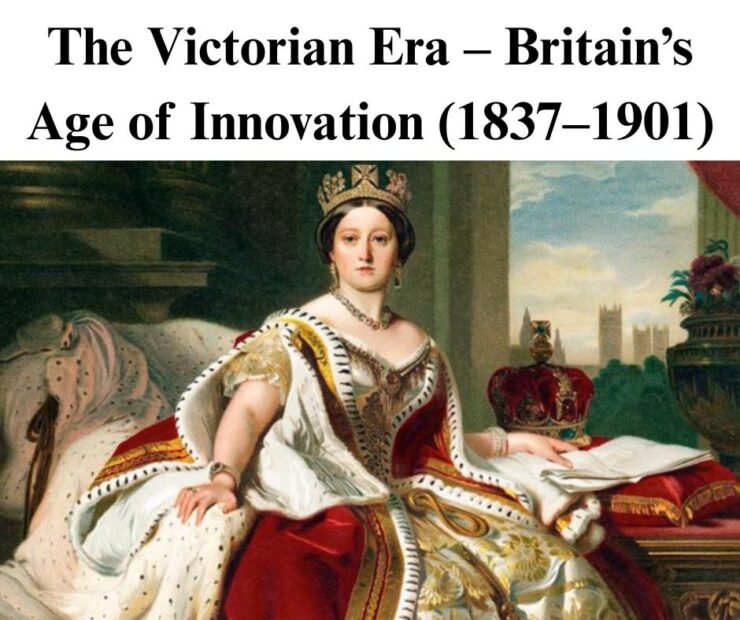
The Victorian Era – Britain’s Age of Innovation (1837–1901)
The Victorian Era, named after Queen Victoria, was a time of immense change, discovery, and global power for Britain.
Spanning from 1837 to 1901, it became one of the most defining periods in British — and world — history.
Key Features of the Victorian Era:
•Industrial Growth:
Britain became the “workshop of the world,” leading advancements in steam engines, railways, factories, and global trade.
•Scientific and Technological Breakthroughs:
Victorians pioneered inventions like the telephone, lightbulb, photography, and even early forms of the computer (Charles Babbage’s Analytical Engine).
•Empire Expansion:
The British Empire expanded enormously, claiming territories across Africa, Asia, and the Pacific, reinforcing Britain’s status as the world’s superpower.
•Cultural Flourishing:
Writers like Charles Dickens, Charlotte Brontë, and Oscar Wilde defined Victorian literature, while Gothic architecture and the Crystal Palace showcased innovation and style.
•Social Challenges:
While industry brought wealth, it also exposed deep poverty, child labor, and harsh working conditions—sparking reforms and new rights movements.
The Victorian Era was a time of contrasts —
great wealth alongside great hardship,
astounding progress alongside profound struggle —but its legacy of innovation, empire, and culture shaped the modern world.
